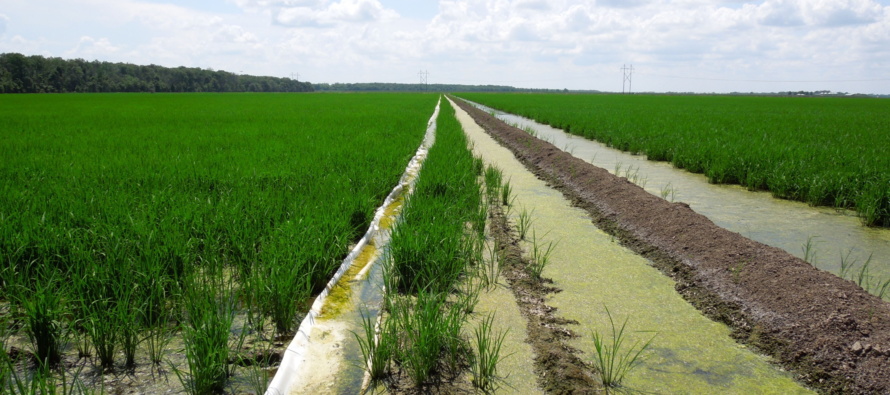Understanding Furrow Irrigation Rice Yield Reduction

Related Articles
- Rice Variety Trial Results For 2010, Plus Rice Research Report 0
- Rice Seeding Rate Calculator and Chart 0
- 2011 Rice Burndown Considerations 0
Latest Tweets
Data from “on farm” trials are helping MSU Researchers understand some of the yield perimeters associated with furrow irrigated rice. If you ask experienced furrow irrigated rice producers one thing is clear, they recognize only a small, if any, yield reduction. MSU Researchers, recognizing the significant yield reduction observed in small plot data compared to producer ex perience, began looking deeper into the on farm data for answers.
perience, began looking deeper into the on farm data for answers.
The two year furrow irrigated rice small plot data suggest that a continuous flood irrigation and an optimized AWD (allowing the flood to recede to 4″ below the soil surface while maintaining flood water on the bottom side of the plots) irrigation yield substantially better than allowing the soil to become dry. When you think about what actually happens on the farm, each field of furrow irrigated rice is actually three sub fields. As demonstrated by the example, the top one third is the driest, the middle is similar to the optimized AWD treatments (soupy wet but never dry), and the bottom one third resembles a continuous irrigated field. This yield map is from a furrow irrigated field that was divided by a levee in the center of the field, essentially two individual fields. Water was held by the levee, as well as the flash board riser.
When you break down the yield in each sub section, the top of the field, the driest, yields were reduced by 12%. The center part of the field, the optimized AWD section (part that remains soupy) yields were reduced by 7%. The section on the bottom side of the field with a continuous flood yielded the highest.
The take home from this analysis is: furrow irrigation fields where producers keep the field moist and are holding an continuous flood on the bottom one third of the field can expect a yield  reduction in the 8-10 bushel range. Producers where the grade of the field will not allow the holding an continuous flood on the bottom side of the field can expect substantial yield losses in the 20 bushel range.
reduction in the 8-10 bushel range. Producers where the grade of the field will not allow the holding an continuous flood on the bottom side of the field can expect substantial yield losses in the 20 bushel range.
Here is the adjacent conventional levee yield map compared to the row rice field. In this comparison, the whole field average of the row rice field was equal to the conventional levee field. The adjacent conventional levee field was on .20 grade with levees every 100′, contributing to a lower field average. Fields with grades great than .10 can be a good fit for row rice.




Disappointed in this test. This is not how to grow rowrice successfully. People talking about 3 different zones are killing me. The idea is to keep it wet. It’s not difficult